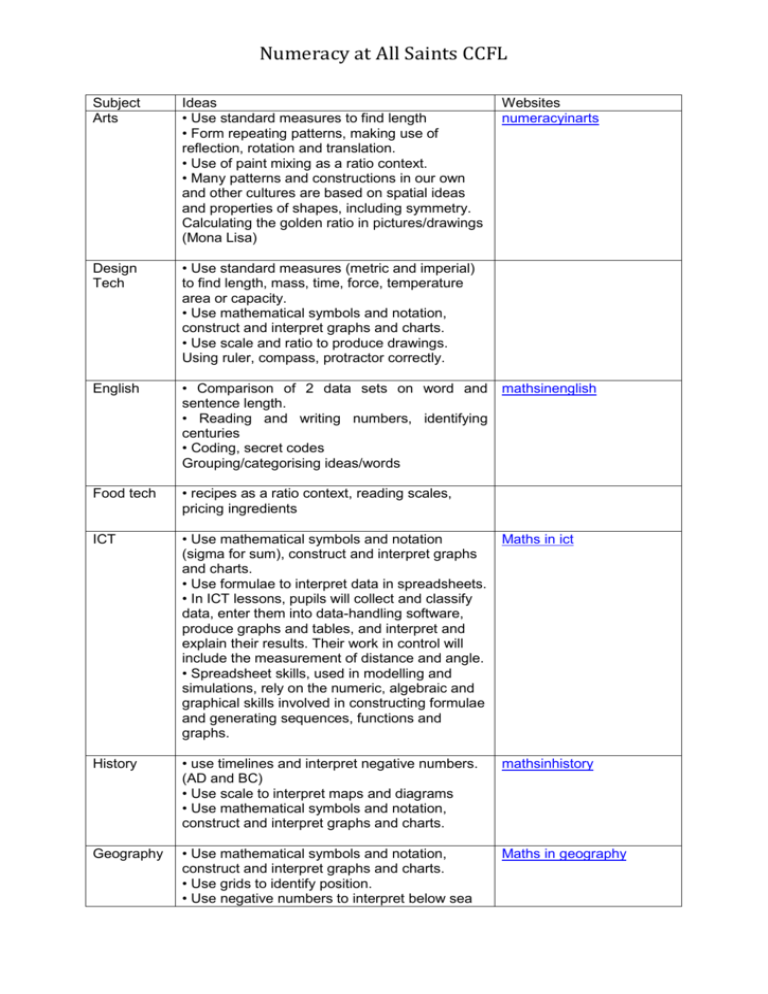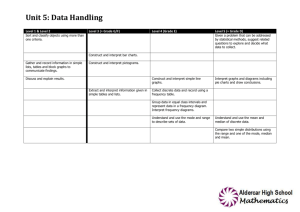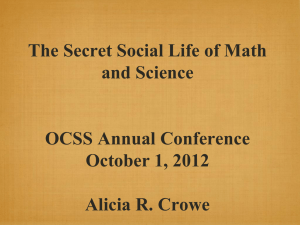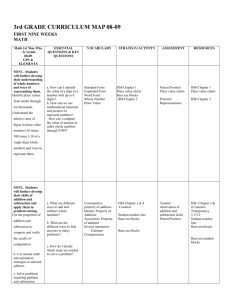Numeracy at All Saints CCFL
advertisement

Numeracy at All Saints CCFL Subject Arts Ideas • Use standard measures to find length • Form repeating patterns, making use of reflection, rotation and translation. • Use of paint mixing as a ratio context. • Many patterns and constructions in our own and other cultures are based on spatial ideas and properties of shapes, including symmetry. Calculating the golden ratio in pictures/drawings (Mona Lisa) Websites numeracyinarts Design Tech • Use standard measures (metric and imperial) to find length, mass, time, force, temperature area or capacity. • Use mathematical symbols and notation, construct and interpret graphs and charts. • Use scale and ratio to produce drawings. Using ruler, compass, protractor correctly. English • Comparison of 2 data sets on word and mathsinenglish sentence length. • Reading and writing numbers, identifying centuries • Coding, secret codes Grouping/categorising ideas/words Food tech • recipes as a ratio context, reading scales, pricing ingredients ICT • Use mathematical symbols and notation (sigma for sum), construct and interpret graphs and charts. • Use formulae to interpret data in spreadsheets. • In ICT lessons, pupils will collect and classify data, enter them into data-handling software, produce graphs and tables, and interpret and explain their results. Their work in control will include the measurement of distance and angle. • Spreadsheet skills, used in modelling and simulations, rely on the numeric, algebraic and graphical skills involved in constructing formulae and generating sequences, functions and graphs. Maths in ict History • use timelines and interpret negative numbers. (AD and BC) • Use scale to interpret maps and diagrams • Use mathematical symbols and notation, construct and interpret graphs and charts. mathsinhistory Geography • Use mathematical symbols and notation, construct and interpret graphs and charts. • Use grids to identify position. • Use negative numbers to interpret below sea Maths in geography Numeracy at All Saints CCFL level. • Use standard measures (metric and imperial) to find length, mass, time, force, temperature area or capacity. • Discussing evidence in history or geography may involve measurement, estimation and approximation skills, and making inferences. • Pupils will make statistical enquiries, for example, in analysing population data to explore and compare lifestyles; they will also use a wide range of measurements and rates of change. • The study of maps includes the use of coordinates and ideas of angle, direction, position, scale and ratio. MFL • Use dates, sequences and counting in other languages; • Use basic graphs and surveys to practise foreign language vocabulary and reinforce interpretation of data. Music • Use addition of fractions in bar music • Use counting for beats • Use sound waves, frequency and oscillations PE • Use time, height and distance in measurements. • Use fractions to identify time. • Collect and record real data, find the averages, compare and draw conclusions. PE Music Dance • Athletic activities use measurement of height, distance and time, and data-logging devices to quantify, explore, and improve performance. • Ideas of counting, time, symmetry, movement, position and direction are used extensively in music, dance, gymnastics, athletics and competitive games. PSHCE and RE • Use mathematical symbols and notation, construct and interpret graphs and charts. • Use standard measures (metric and imperial) to find length, mass, time, force, temperature area or capacity. • Use timelines and interpret negative numbers (ad and bc). Belief and likelihood in religious education, or risk assessment in PSHE, relate well to work in mathematics. The discussion of moral and social issues is likely to lead to the use of primary and secondary data and the interpretation of graphs, charts and tables, helping pupils to make reasoned and informed decisions and to recognise biased data and misleading Maths in music numeracyinarts numeracy in PE Numeracy at All Saints CCFL representations. By applying mathematics to problems set in financial and other real-life contexts, pupils will develop their financial capability and awareness of the applications of mathematics in the workplace. Science • Use formulae to calculate work, power, mass, density • Rearrange formulae • Use graphs to represent data, interpretation of graphs • Use standard measures to find length, mass, time, force, temperature, area or capacity; • Manipulate numerical data from their experiments and do calculations; • Use mathematical symbols and notation, construct and interpret graphs and charts. Take readings from scales.






